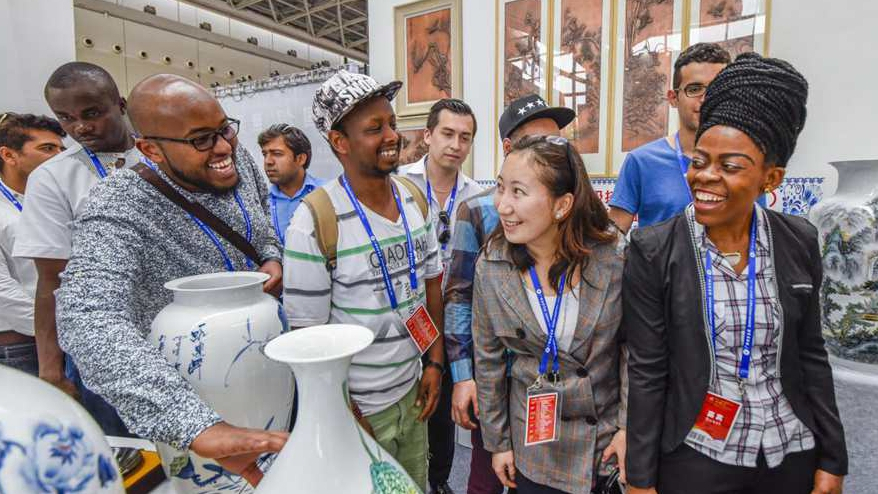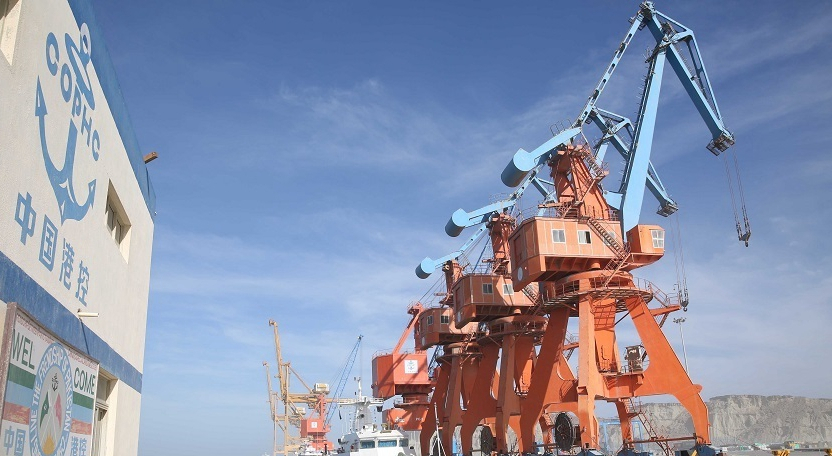
Opinions
09:00, 06-Sep-2018
People to people bond: A booster to the Construction of BRI
Updated
08:15, 09-Sep-2018
Liu Chunsheng

Editor's note: Liu Chunsheng is an associate professor at the Beijing-based Central University of Finance and Economics, and deputy dean of Blue Source Capital Research Institute. The article reflects the author's opinions, and not necessarily the views of CGTN.
Since China proposed the Belt and Road initiative (BRI) in 2013, more and more countries have responded enthusiastically. For five years, China has actively promoted the spirit of friendly cooperation and carried out extensive cultural, educational, tourism, health and medical cooperation, scientific and technological collaboration with countries and regions along the BRI.
It laid a solid foundation for public awareness. Chinese President Xi Jinping proposed that the countries' trust and cooperation lies in the people to people bond. To ensure policy coordination, facility connectivity, unimpeded trade, and financial integration, enhance mutual understanding and lay a solid foundation for business, we must get the support from all countries and strengthen the friendship of the people.
At present, the BRI construction performed better in the region where there's communication between the people and a high level of political mutual trust.
As a booster of economic and trade cooperation, the people to people bond will enhance strategic mutual trust and open ideas, and help to have a better understanding of the Belt and Road Initiative.

The Gwadar port area in Gwadar, Pakistan. March 22, 2017 /Xinhua News Agency
The Gwadar port area in Gwadar, Pakistan. March 22, 2017 /Xinhua News Agency
Taking the China-Pakistan Economic Corridor as an example, as the earliest project launched by the BRI, the China-Pakistan Economic Corridor has made rapid progress, thanks to people to people bond and culture exchanges between two countries.
China and Pakistan took the social exchanges as a first step to deeper cooperation. Using the geographical advantages and friendly city platform, China and Pakistan have built a bridge of people communication, a platform for social , cultural and education resources exchanges which have fully assisted the construction of the China-Pakistan Economic Corridor.
The humanities and social environment is based on the common interests of cooperation and interdependence. It is a platform for mutual benefit and win-win cooperation and the establishment of fair and equitable exchanges in various fields such as economy, humanities and society.
The China-Pakistan Economic Corridor allows multi-ethnic, multi-religious and multi-cultural convergence and integration which have formed a spirit of solidarity, mutual benefit, tolerance, peace and common development.

A foreign student takes a selfie at her graduation ceremony at Zhejiang University on June 28, 2018 /Xinhua News Agency
A foreign student takes a selfie at her graduation ceremony at Zhejiang University on June 28, 2018 /Xinhua News Agency
The people to people bond in BRI is also the meeting of ideas and cultures. The countries along the Belt and Road have diverse social systems and religion, and the economic growth model, development strategy.
The commonwealth of the people will help to promote the ideological emancipation and accelerate the integration into the globalization process. By strengthening people's exchanges and enhancing mutual understanding and traditional friendship, the construction of BRI could be promoted to higher level.
The people to people bond is not an empty concept. It must be integrated into the real business and life. Education, culture and language exchange are important foundations of bilateral relations.
Since the BRI was launched in 2013, the participating countries have cooperated extensively in science, education, culture, health, and non-governmental exchanges, which has promoted the commonwealth of the people and solidified the foundation for the construction of the Belt and Road.
Cultural exchange plays a special and important role in the process. The success of the Belt and Road Initiative depends fundamentally on whether it can bridge all kinds of barriers and strengthen ties between the people, especially whether it can establish a cultural integration and social exchange network.
(Cover Photo: People participate in the ASEAN Expo Cultural Exhibition in Nanning, Guangxi. The exhibition revolved around the theme of "Building the 21st Century Maritime Silk Road and Promoting China-ASEAN people-to-people bonds," April 13, 2017. /Xinhua News Agency)
(If you want to contribute and have a specific expertise, please contact us at at opinions@cgtn.com.)

SITEMAP
Copyright © 2018 CGTN. Beijing ICP prepared NO.16065310-3
Copyright © 2018 CGTN. Beijing ICP prepared NO.16065310-3